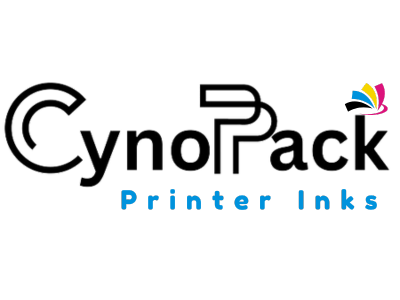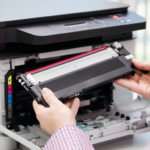In a world of networked devices, knowing your printer’s IP address is essential. Whether you’re troubleshooting connectivity, setting up a network printer, or managing devices across a large office, finding your printer’s IP address can help streamline your tasks. This article provides a step-by-step guide to locating your printer’s IP address across various platforms and methods, with professional tips to make the process even easier.
Understanding Printer IP Addresses
An IP (Internet Protocol) address is a unique identifier assigned to devices connected to a network. Just like computers and mobile devices, printers are also assigned IP addresses to communicate over a network. This IP address allows users to access the printer from multiple devices, enables remote printing, and assists in diagnostics.
In larger network environments, such as offices or shared spaces, printers are often assigned static IP addresses to avoid connectivity issues. In contrast, home users generally rely on dynamic IP addresses which can change over time. Knowing how to locate and verify a printer’s IP address helps avoid common connectivity errors.

Why You Might Need Your Printer’s IP Address
There are several scenarios in which knowing your printer’s IP address can be beneficial:
- Setting Up Network Printing: When adding a printer to a new device, the IP address can help establish a connection, especially for wireless printers.
- Troubleshooting Printer Issues: If your printer isn’t responding, checking the IP address can help determine if the issue lies in network connectivity.
- Remote Printing: An IP address is required to configure remote printing, allowing access from anywhere within the network or, in some cases, over the internet.
- Managing Multiple Printers: In offices with multiple printers, knowing each device’s IP address aids in printer management and efficient document routing.
Methods to Find Your Printer’s IP Address
There are various methods available for locating your printer’s IP address, depending on the model, your operating system, and network setup. Here, we cover the most reliable ways to find it quickly.
1. Using the Printer’s Control Panel
Many modern printers, especially from brands like Epson, HP, and Canon, are equipped with LCD screens that display essential settings, including network information.
Steps:
- Access the Control Panel: On your printer’s LCD screen, navigate to Settings or Network.
- View Network Information: Look for Network Settings or Wi-Fi Status options.
- Locate the IP Address: The IP address should appear in this section, listed as either IPv4 Address or IP Address.
Tip: If the printer’s display does not show the IP address directly, look for an option to print a Network Configuration Page. This page will list all network-related details, including the IP address.
2. Finding the IP Address via a Computer (Windows and Mac)
Using a computer to find the IP address is one of the most straightforward methods, suitable for both Windows and Mac users.
Windows
- Open Control Panel: Go to Control Panel > Devices and Printers.
- Right-click on Your Printer: Select Properties or Printer Properties from the dropdown menu.
- Check Web Services or Ports: Navigate to the Ports tab, where the IP address should be displayed. Alternatively, under Web Services or Network Settings, the IP will be listed.
macOS
- Open System Preferences: Click on System Preferences > Printers & Scanners.
- Select Your Printer: Choose your printer from the list, then click Options & Supplies.
- View IP Address: Under General or Network, the IP address will be visible.
Expert Insight: On both systems, it’s possible to set a static IP directly from these options, which is useful for keeping your printer accessible without IP changes disrupting the connection.
3. Checking the Router’s Connected Devices List
Your router keeps a list of all connected devices, including their IP addresses. This method is especially useful if you’re unable to access the printer physically or if it lacks a screen.
Steps:
- Log into the Router’s Admin Panel: Use your router’s IP address (usually something like 192.168.0.1 or 192.168.1.1) to log in through a web browser.
- Locate Connected Devices: Navigate to Attached Devices, Device List, or Network Map.
- Identify Your Printer: The printer’s IP address should appear next to its name or MAC address.
Tip: Routers often list devices by their type and connection method (e.g., Wi-Fi or Ethernet). Look for labels like “Epson” or “Canon,” depending on your printer model.
4. Printer IP Address via Network Configuration Page
Printing a Network Configuration Page is a universal method that works with almost any printer model, particularly if the device has a limited display.
Steps:
- Access Settings: On your printer, access the Settings or Tools menu.
- Select Print Network Settings: Find and select the Print Network Configuration Page option.
- Retrieve the IP Address: The printed page will contain all relevant network details, including the printer’s IP address, subnet mask, and DNS information.
Professional Advice: Printing the Network Configuration Page is ideal when troubleshooting in a large office environment, as it provides detailed network information without requiring access to the control panel or computer.
Troubleshooting: What to Do If You Can’t Find the IP Address
If these methods don’t yield the printer’s IP address, there may be underlying connectivity issues. Here’s how to troubleshoot:
- Ensure the Printer is Connected: Verify that the printer is connected to the same Wi-Fi or wired network as your computer.
- Restart the Printer and Router: Network congestion or temporary errors can affect connectivity. Restart both devices and try again.
- Check Printer Settings: Access your printer’s settings to ensure IP Auto-Assignment (DHCP) is enabled, allowing the router to assign an IP address.
Additional Tip: If your printer constantly loses connection, consider setting a static IP address to prevent this issue from recurring.
Advanced Tips for Managing Printer Network Settings
For advanced users or office managers, managing printer network settings can significantly improve connectivity and efficiency.
Set a Static IP Address
Assigning a static IP address prevents your printer’s IP from changing, making it easier for all devices on the network to locate it consistently.
- Access Network Settings: Through the printer’s control panel or the computer settings, locate TCP/IP or IP Configuration.
- Disable DHCP: Switch from Automatic (DHCP) to Manual or Static.
- Enter IP Information: Set an IP address that isn’t in use on your network, along with the correct subnet mask and gateway.
Use Printer Management Software
For larger setups, consider using printer management software to monitor multiple devices. Epson and other brands offer tools like EpsonNet Config or PrinterLogic for streamlined control.
Regularly Update Firmware
Printer firmware updates can improve connectivity and performance. Check your printer’s settings or visit the manufacturer’s website to download the latest updates.
Conclusion
Knowing how to find your printer’s IP address empowers you to manage connectivity, troubleshoot effectively, and streamline network printing. Whether you’re setting up a new printer, resolving network issues, or optimising your workspace, these methods offer reliable ways to locate and manage your printer’s IP address.
For the best in Epson-compatible inks and printing supplies, check out Cynopack’s selection of Epson inks for reliable quality and exceptional value.






